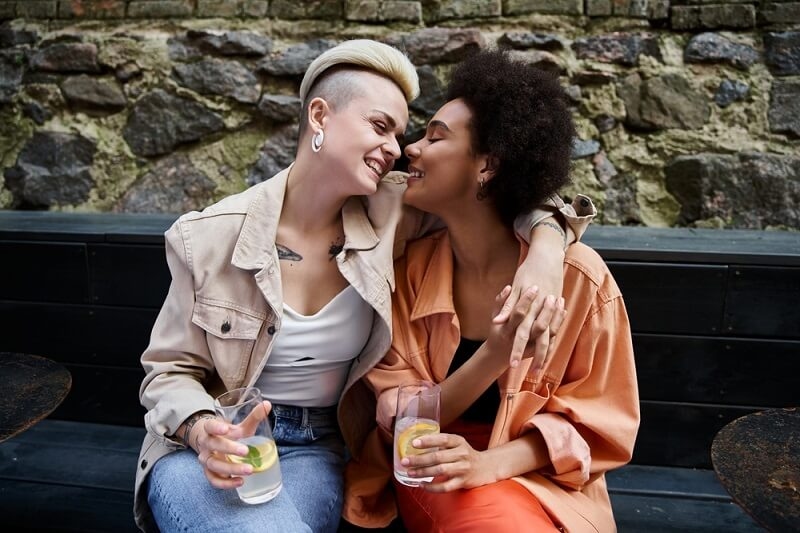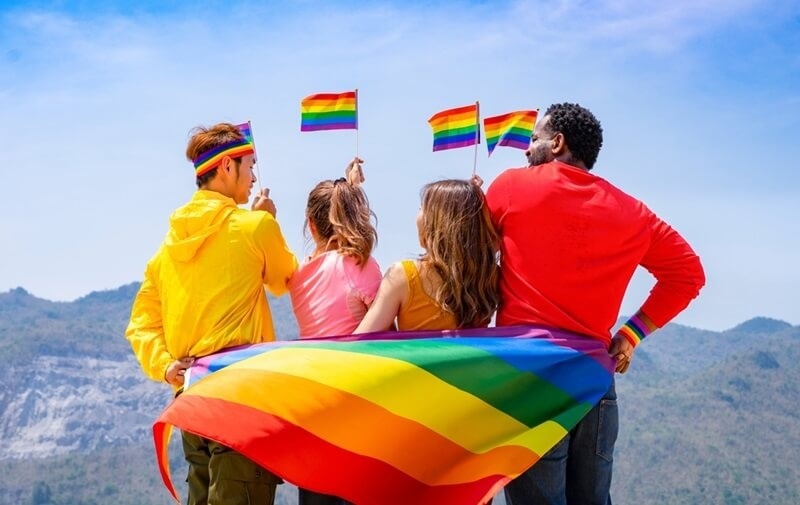Recognizing the Unique Traits of Bisexual Females

The landscape of human sexuality is as diverse and complex as the individuals who navigate it. Among the myriad expressions of sexual identity, female sexuality often emerges as particularly fluid, capable of evolving and adapting over the course of a lifetime. This fluidity can manifest in myriad ways, from the shifting sands of attraction to the broadening understanding of one's own desires.
Central to this conversation is the concept of bisexuality in women. Bisexuality is defined as the romantic, emotional, and/or sexual attraction to more than one gender. It's not a matter of being split between heterosexual and homosexual attraction, but rather a unique identity that encompasses a spectrum of feelings and experiences. For bisexual women, this means the capacity to find men, women, and non-binary individuals attractive.
Understanding Bisexuality
Understanding bisexuality requires an acknowledgment of its spectrum. It's not a rigid category but a realm of possibility where attraction doesn't adhere to binary norms. A bisexual woman might find herself drawn more to one gender over another, or her attractions might shift over time. This fluidity is a natural aspect of her sexuality, not a phase or a state of confusion.
The emotional, romantic, and sexual attractions that bisexual women experience are as real and profound as those felt by individuals of any other sexual orientation. These attractions can be towards people of different genders simultaneously or vary at different times. However, the journey to understanding and accepting these attractions can be fraught with societal misconceptions and internal conflict. Bisexual women often face challenges in gaining acceptance from both heterosexual and homosexual communities, leading to a struggle with self-acceptance.
Signs of Bisexuality in Females

The signs of bisexuality in females are as varied as the individuals themselves, often inclusive of trans voices and experiences. Some may find that they flirt with or check out women, recognizing an attraction that extends beyond appreciating beauty. Others may realize that their celebrity crushes are not exclusively male, and that they feel a genuine attraction to female public figures.
Behavioral changes when drinking, such as becoming more flirtatious with women, can also be a sign of underlying bisexual tendencies. For some, alcohol may lower inhibitions enough to explore an attraction that is otherwise kept under wraps.
Self-identification as sexually fluid is another indicator, as it suggests a recognition of the ability to be attracted to people regardless of gender. Emotional intimacy in friendships, particularly with other women, can also be a sign. It's not uncommon for bisexual women to form deep, emotionally intimate bonds that blur the lines between platonic and romantic.
Reactions to lesbian romance or pornography can be telling as well. A woman who finds herself unexpectedly turned on by such content may be tapping into a part of her sexuality that resonates with same-sex attraction.
Looking back at adolescence, some women may recognize that what were once thought to be intense friendships with other girls may have actually been crushes or romantic feelings.
Lastly, a strong advocacy for LGBTQ+ rights can sometimes be more than allyship; it can be a personal connection to the community and a sign of one's own journey in understanding their sexuality.
These signs are just a few within a broader spectrum, each suggesting that a woman's attraction might not fit into a neat, heterosexual box. Understanding and recognizing these signs can be the first step toward self-acceptance and embracing the full spectrum of one's sexuality.
Bisexuality vs. Bicuriosity
Understanding the nuances of sexual orientation involves distinguishing between terms like bisexuality and bicuriosity. Bisexuality, as previously discussed, is the attraction to more than one gender. This attraction is not just a fleeting curiosity but a consistent part of an individual's identity. Bisexual individuals experience genuine emotional, romantic, and sexual attractions to people of different genders.
Bicuriosity, on the other hand, refers to individuals who are curious about and exploring attractions to more than one gender but are not sure if these attractions are persistent or strong enough to form part of their identity. Bicurious people might find themselves intrigued by the idea of being with someone of the same or a different gender but haven't yet fully explored or embraced these feelings as a definitive part of their sexuality.
In behavior and attraction, these identities manifest differently. Bisexual individuals often have a history of, and a desire for, ongoing relationships with multiple genders, embracing the joy of gay families, whereas bicurious individuals might be in the exploratory phase, testing the waters of their attraction without a firm commitment to any particular orientation.
Taking the Bisexuality Quiz
The bisexuality quiz, as mentioned in the article, serves as a tool for self-exploration. It's designed to help individuals reflect on their feelings and experiences to better understand their sexual orientation. While no quiz can definitively determine someone's sexuality, it can provide insights and provoke thought, aiding in the journey of self-discovery.
Navigating Bisexuality
For those who think they might be bisexual, the path to understanding and embracing this identity involves several steps. Firstly, it's crucial to allow oneself the time and space for self-discovery. Avoiding hasty labeling or jumping to conclusions is important, as understanding one's sexuality can be a complex and evolving process.
Seeking support, whether from friends, family, or LGBTQ+ groups, can be incredibly beneficial. Talking about feelings and experiences with others who might have gone through similar journeys can provide comfort and guidance.
You may also like: Mental Health Support for the Bisexual Community
Conclusion
The journey towards understanding and accepting one's bisexuality is deeply personal and varies from one individual to another. The most important aspect of this journey is self-acceptance and authenticity. Embracing one's sexuality, whatever it may be, is a crucial step towards living a fulfilled and authentic life.
In conclusion, whether one identifies as bisexual, bicurious, or is still in the process of figuring it out, the journey is valid and important. Understanding and embracing one's sexual orientation is a significant aspect of one's identity and should be approached with openness, patience, and self-compassion.
This content was created by AI























